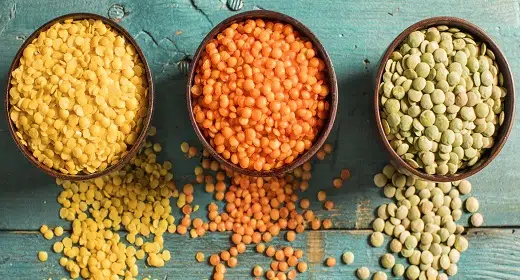by Ocean Robbins: When his dear friend Enkidu died, the legendary Mesopotamian hero Gilgamesh expressed his grief in poetic terms: “I am speaking but you do not hear my words…
We are proud to announce a new partnership with John and Ocean Robbins and the Food Revolution to bring our readers Summits, Seminars and Masterclasses on health, nutrition and Earth-Conscious living.
Sign Up Today For the Healthy Brain Masterclass
I say your name but you do not turn your head. I feel your heart but it is not beating.”
That last sentence suggests that even 5,000 years ago, humans understood that the beating heart was both a prerequisite for and a sign of life. Since then, medical traditions around the globe have assessed patients’ pulses — how the heartbeat can be felt — for diagnostic purposes.
Ayurvedic texts from 600 BCE speak of the three stages of the pulse, corresponding to the three bodily humors — air, bile, and phlegm. Ancient Greek physicians discovered, as they mapped the human circulatory system, that pulses occur in arteries, not veins. And today, advanced technology can measure many aspects of circulation, including blood pressure, the electrical activity of the heart, and subtle arrhythmias.
Which is all to say, the pulse has long been considered a crucial indicator of human health.
So it’s cool that another kind of pulse — the category of food consisting of dried beans, peas, chickpeas, and lentils — can contribute to our well-being, including heart and overall health.
Dietary Pulses
In this article, we’ll explore one of the most awesome of all the pulses — lentils. In some cultures, lentils have long been honored for their health benefits. In Italy, for example, lentils represent luck and prosperity and are traditionally served on New Year’s Eve to attract money and success.
And, we now have the science to affirm humanity’s long-lived love of lentils. They’re not only good for your health but are also environmentally friendly superfoods that can restore soil and help to combat global climate chaos.
As we explore, we’ll briefly discuss why lentils are so darn good for us and the planet, as well as look at the variety of lentils available to us. (For an in-depth look at lentils, check out our comprehensive article on their nutritional and environmental benefits.)
We’ll also talk about how to use lentils — and cook different types — and share seven delicious plant-based lentil recipes.
Why Eat Lentils?
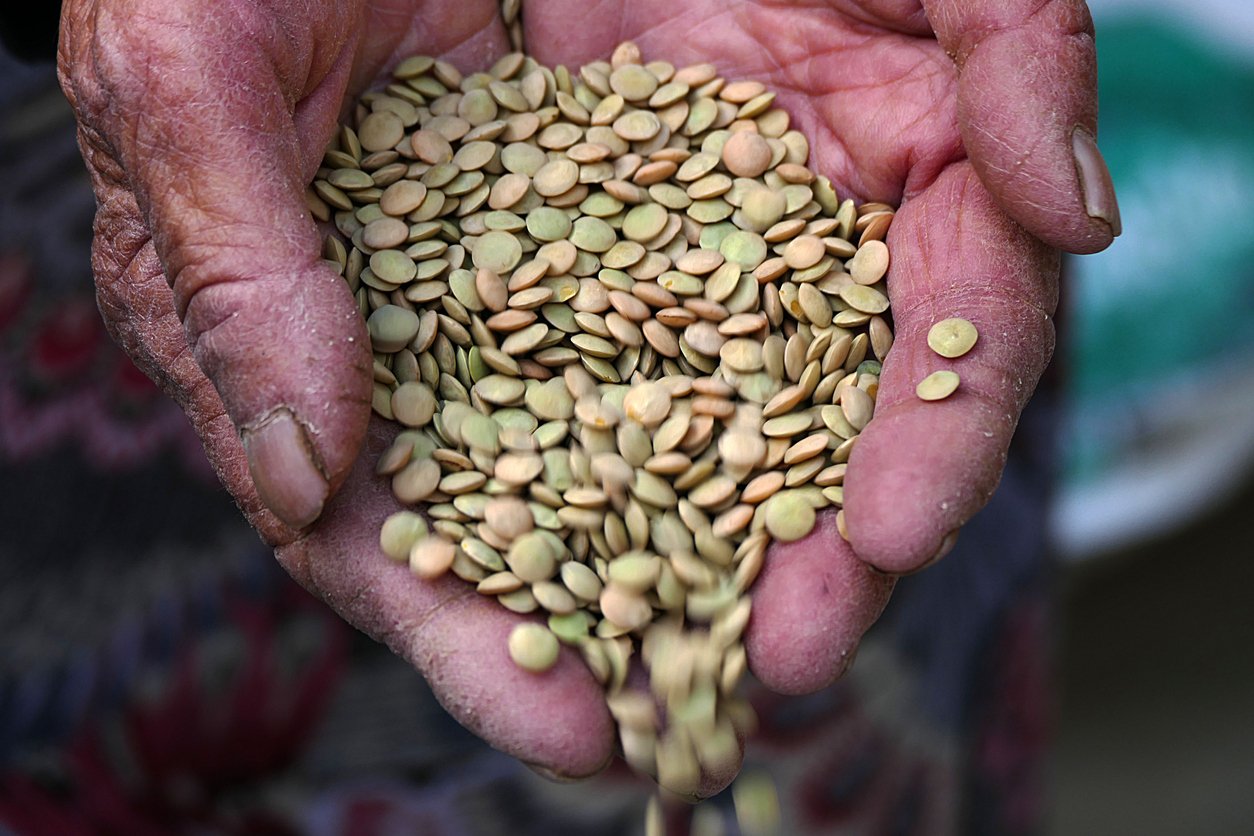
Now that I’ve impressed you with my knowledge of ancient Sumerian epic poetry (or, really, my ability to look stuff up on Wikipedia), it’s time to stick the landing with a quotation from “Sonnet 43” by Victorian poet Elizabeth Barrett Browning: “How do I love thee? Let me count the ways.”
While some unimaginative scholars insist that Barrett Browning was speaking these words to her husband, Robert, it seems perfectly plausible to me that she was addressing a pot of lentils. My proof? Let’s just count the ways lentils are awesome, and see if you’re convinced.
Way #1: Lentils Are Nutritious
Lentils are among the best sources of plant-based protein, serving up 18 grams per cooked cup. They’re also high in fiber (providing almost 16 grams per cup), which is a big deal since many Western-style diets are sorely lacking in this crucial and underappreciated nutrient.
Lentils are high in B vitamins, as well as minerals like iron, magnesium, phosphorus, potassium, zinc, copper, and manganese. And they’re a great source of nutrient-dense calories, which makes them — and other pulses like beans and peas — so valuable in the fight against hunger worldwide.
Way #2: Lentils are Affordable
Lentils are one of the most affordable superfoods, with a cost per serving that can run as low as $0.10, compared to $1.50 for beef and $0.63 for chicken. With all that protein, lentils are a good replacement for the more expensive meats.
A one-pound bag of dried lentils may run you $1–5, depending on the brand, the variety, and if they’re organic. And although prices have increased since the beginning of the COVID-19 pandemic, lentils are still a more affordable and healthier option than meat. Plus, when you add water to cook them, the price per pound of cooked lentils comes down even more (kind of like Hamburger Helper, but just with water and without the hamburger).
Way #3: Lentils are Versatile
Lentils can serve many roles in your kitchen. Different types of lentils — brown, green, red, yellow, French, etc. — have different tastes and textures, and do various wonderful things in dishes. Some make a hearty and healthy meat substitute and can be swapped in wherever you’d use ground beef. Some you eat whole, while others disintegrate when cooked and are used to create or thicken soups and stews. Lentils feature in cuisines from Italy, India, Nepal, Morocco, and France, among many others.
And, of course, the Grimm Brothers aced the lentil “alternative use test” of creativity by having the evil stepmother throw a pot of the pulses into the fireplace to keep Cinderella too busy separating them from the ashes to make it to the prince’s ball.
Way #4: Lentils are Sustainable
While most crops require nitrogen fertilizer to grow in overused fields, lentils actually add nitrogen back into the soil. Replacing fertilizer-dependent crops like wheat and corn with lentils could help restore farmland and help farmers whose soil and profits have been depleted by decades of industrial agriculture.
Lentils also sequester carbon in the soil, which reduces greenhouse gasses and can combat climate change. Because they add organic matter back to the soil, they play well with other crops in rotation, a hallmark of many systems of sustainable agriculture.
And lentils are tolerant of many different — and challenging — growing conditions. Growers can cultivate them in a remarkable array of climates and terrain. They don’t need a lot of water, so the overall water footprint of lentils is much smaller than that of animal products, especially beef.
Types of Lentils & How to Use Them
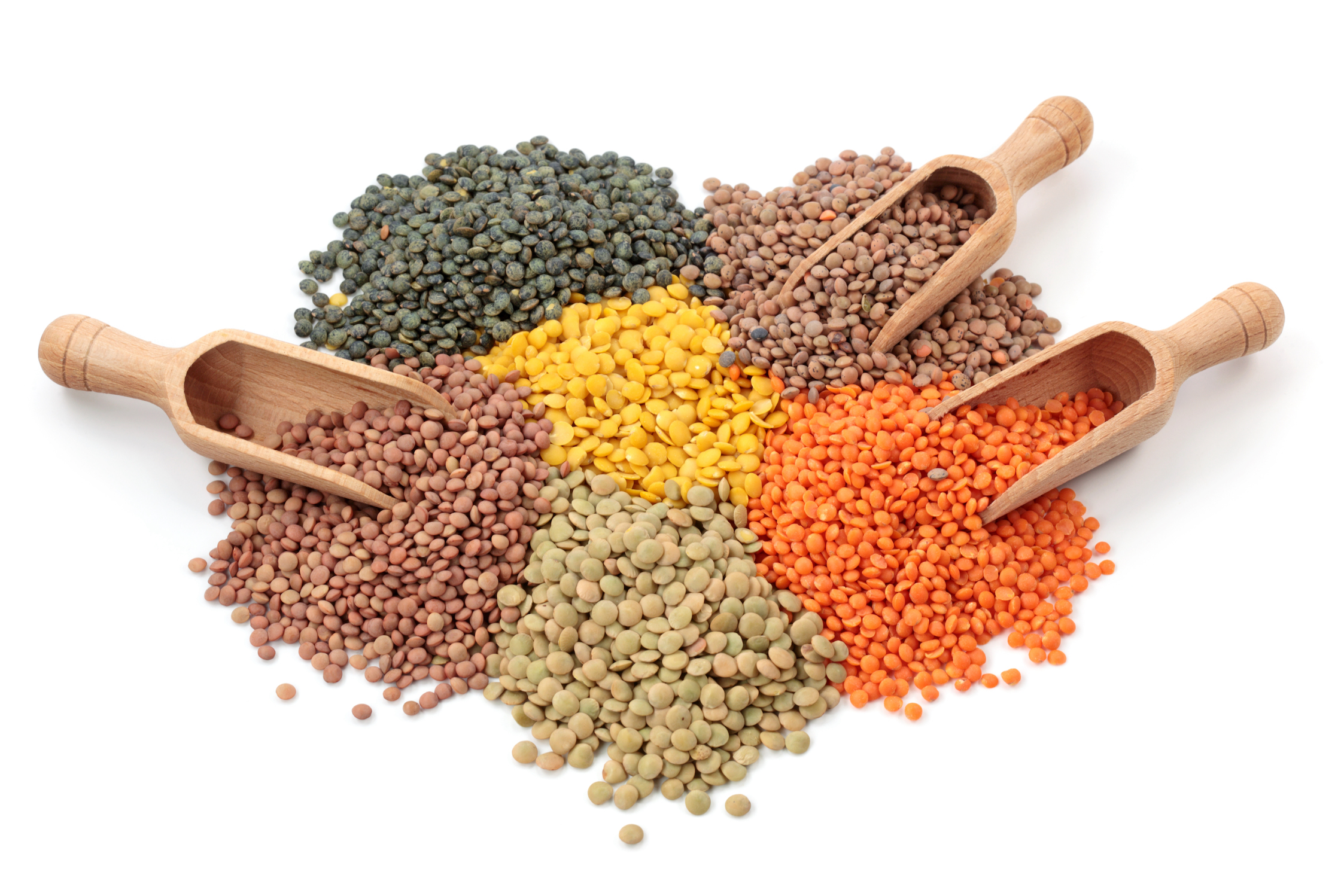
While there are dozens of varieties of lentils, these four main categories are most common in modern cuisines — brown, green, red and yellow, and specialty lentils.
Brown Lentils
Brown lentils hold their shape, and even when thoroughly cooked, retain a firm texture. Their flavor comes across as mild and a bit earthy. Depending on the variety, their color may vary from light brown to almost black.
Use brown lentils in traditional lentil soups and Indian dal recipes (dals are dishes of spiced lentils — ingredients and cooking styles vary from region to region in India). They also make a great meat substitute. Swap them in for ground beef or other meats in chilis, stews, soups, and sandwiches like sloppy joes.
You can also use brown lentils in taco fillings, as a salad topper, in vegan shepherd’s pies and other casserole dishes, and as a base for veggie burgers and lentil loaves.
Green Lentils
Like brown lentils, green lentils have a firm texture and hold their shape when cooked. Unlike their brown cousins, green lentils have a sharp, peppery flavor. Don’t confuse them with green split peas, which are actually field peas (a whole other branch of the pulse clan) that have been dried and split.
Green lentils shine in soups, salads, and curries, as a side dish, and when mixed into sauces like tomato sauce for a plant-based ragu.
Red Lentils
Red lentils, also known as split lentils, can range in hue from yellow to orange to red, although they all turn kind of yellowish when cooked. The two things I love most about red lentils are how quickly they cook, compared to other pulses, and how great they taste when fully cooked — creamy and nutty and a little bit sweet.
You can use red lentils in creamy lentil soups and dals, as well as to thicken other types of soups, stews, curries, and chilis. You can also blend them into sauces and dips, and even include them in baked goods like pancakes or muffins.
Specialty Lentils
Just because lentils are inexpensive and filling doesn’t mean you can’t find glamorous varieties that like to go to fancy parties on yachts. Black beluga lentils, named after the very expensive caviar they resemble, have a firmer texture and thicker skin than other lentils. They have a rich, earthy flavor, and also absorb other flavors, which makes them ideal for marinating. Use beluga lentils in salads, dals, grain bowls, and stuffed sweet potatoes. And, of course, daintily place a teaspoon of them on a toast point if you’d like to pretend you’re prerevolutionary Russian royalty.
French Lentils, aka Puy lentils, also aspire to high cuisine. Green, although slightly darker and smaller than regular green lentils, French lentils taste nutty, peppery, and earthy all at once. Authentic Puy lentils are grown in volcanic soil, which gives them extra flavor and nutritional value. You can use them in soups, stews, salads, side dishes, and savory pies.
Cooking Lentils
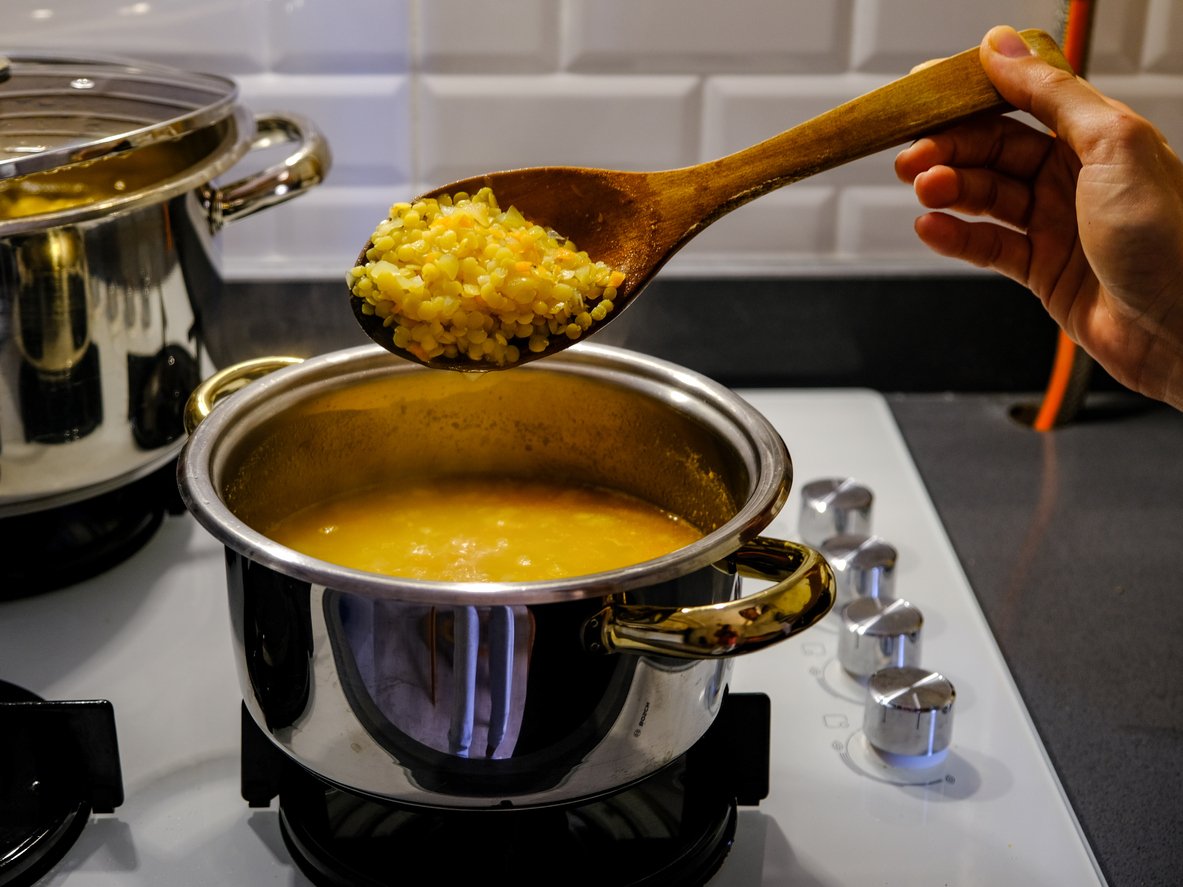
Now that you know about the awesomeness of lentils, let’s talk about how to cook them. Lentils are small and thin, so they don’t need to be presoaked before cooking. Unlike most beans, which require a good hour or more to go from dry to done, most lentils will cook to a soft consistency within 15–30 minutes.
That said, soaking them for a few hours or overnight may improve the digestibility of the starches. And if you’re short on time, an overnight soak can cut your next day’s cooking time in half.
If you don’t soak them, you may still want to rinse your lentils in a bowl or colander to remove any debris or small pebbles. I can tell you from experience, it doesn’t matter how long you cook a pebble, it will still hurt your teeth when you bite on it! Red lentils need a good rinse, as they are sometimes dusty from the process that removed their hulls.
Soaking lentils for around 12 hours will initiate the sprouting process, which you can continue for up to a few days. Keep them in a sprouting tray or jar (or use a mason jar with a mesh lid) and rinse them with clean water twice a day. This will increase both their nutritional power and their digestibility.
If you’re starting with dry lentils, here are some standard cooking times for lentils on the stovetop:
- Brown & green lentils: 30 minutes in a pot (use 2 ½ – 3 cups liquid to 1 cup dry lentils)
- Red & yellow lentils: 15 minutes, quick cooking (use 1 ½ cups liquid to 1 cup dry lentils)
You can also use a stovetop pressure cooker, an electric pressure cooker like an Instant Pot, as well as a slow cooker. For detailed instructions on each of these lentil cooking methods, here’s a useful guide.
Lentil Recipes
One of the many things we love about lentils is their ability to connect us globally. Thanks to their versatility, they fit into almost every type of cuisine on the planet. Try out these tasty lentil recipes to gain some inspiration and unlock new worlds to share with others right from the comfort of your own kitchen!
1. Breakfast Cauliflower Lentil Kitchari
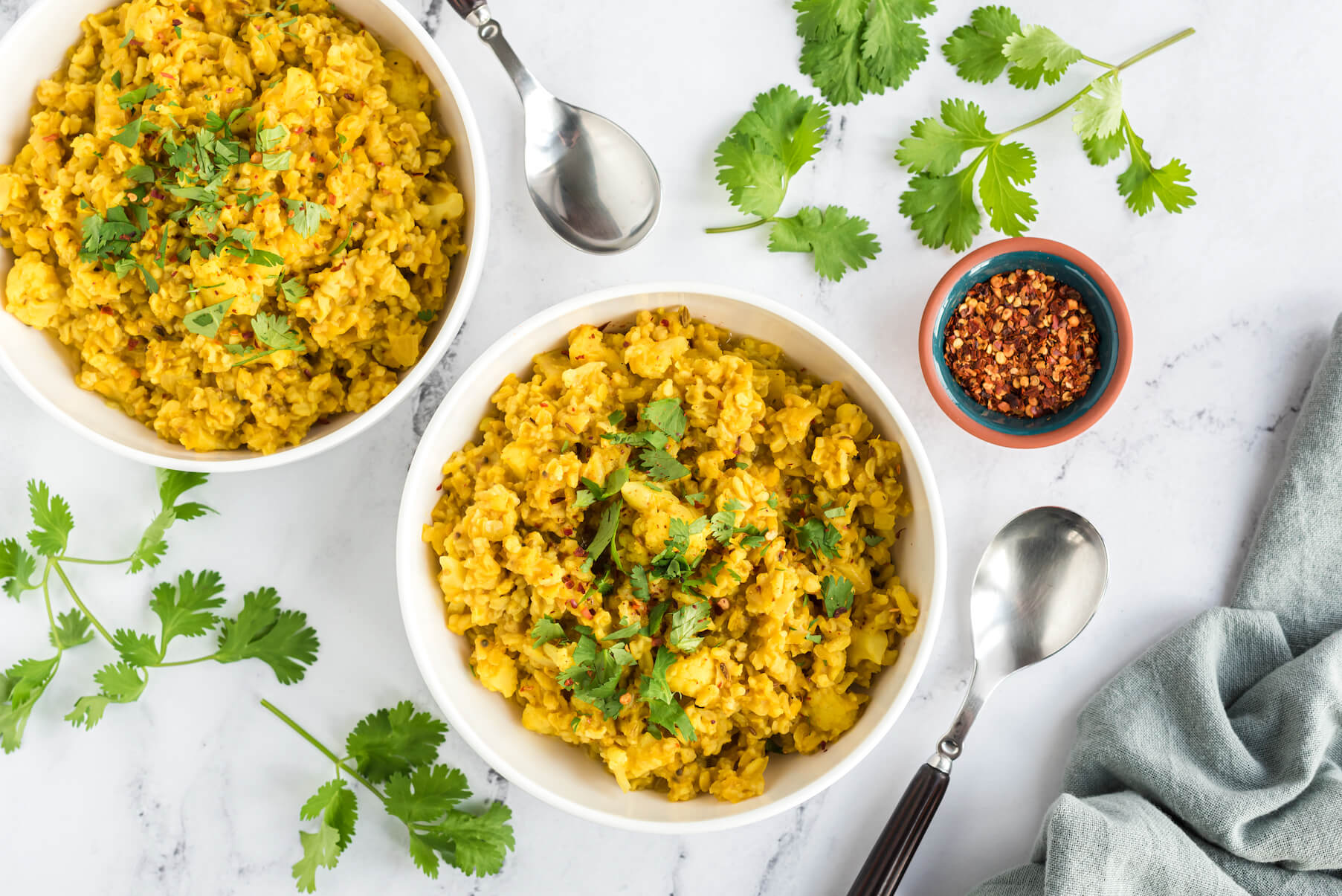
Imagine starting your day sitting at the table, admiring a warm and cozy bowl filled with revitalizing plant-based ingredients, while taking in the delicate and comforting aroma that surrounds you. Now imagine sitting peacefully, mindfully savoring each bite, and feeling positive energy fill your body in preparation for the day ahead. Sounds like a dream — or is it?
Ayurveda-inspired Breakfast Cauliflower Lentil Kitchari is a savory bowl that is nourishing and restorative for mind, body, and soul. Even better, it’s delicious warm or cold and is actually more flavorful the next day. Make it the night before and enjoy it in the morning for a comforting meal filled with fragrant spices, fiber-filled grains, protein-packed lentils, and healing cauliflower.
2. Super Greens Salad with Bulgur and Lentils
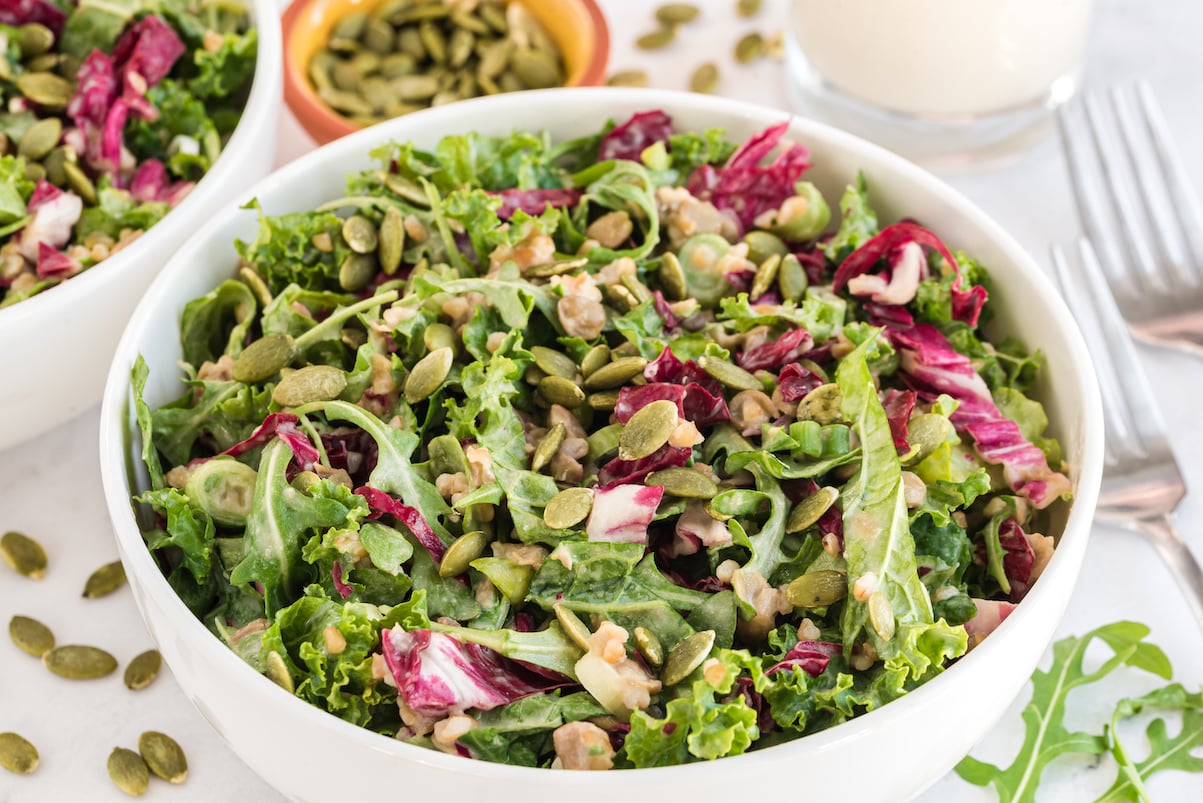
Lentils’ delicate flavor and hearty texture stack up well to the robust flavors of the super greens (arugula, kale, and radicchio), crunchy pumpkin seeds, and delightfully creamy ginger dressing in this nutritional powerhouse. What’s more, there is plenty of fiber in this satisfying salad. Plus, assembly is a breeze. There is so much to love about this homage to Middle Eastern and Mediterranean cuisines — we’re sure you’ll think so, too!
3. Creamy Red Lentil Soup

“Comfort classic” may not be the first thing you associate with lentils, but it will be once you whip up a batch of this creamy deliciousness! Red lentils and potatoes make a creamy base that elevates the presence of carrots, garlic, and pungent spices. With such seemingly humble ingredients, you’ll be blown away by just how nourishing this soup really is. The result is a warm and cozy, beautifully-hued soup that you may or may not be willing to share.
4. Warm Garlic and Herb Lentils
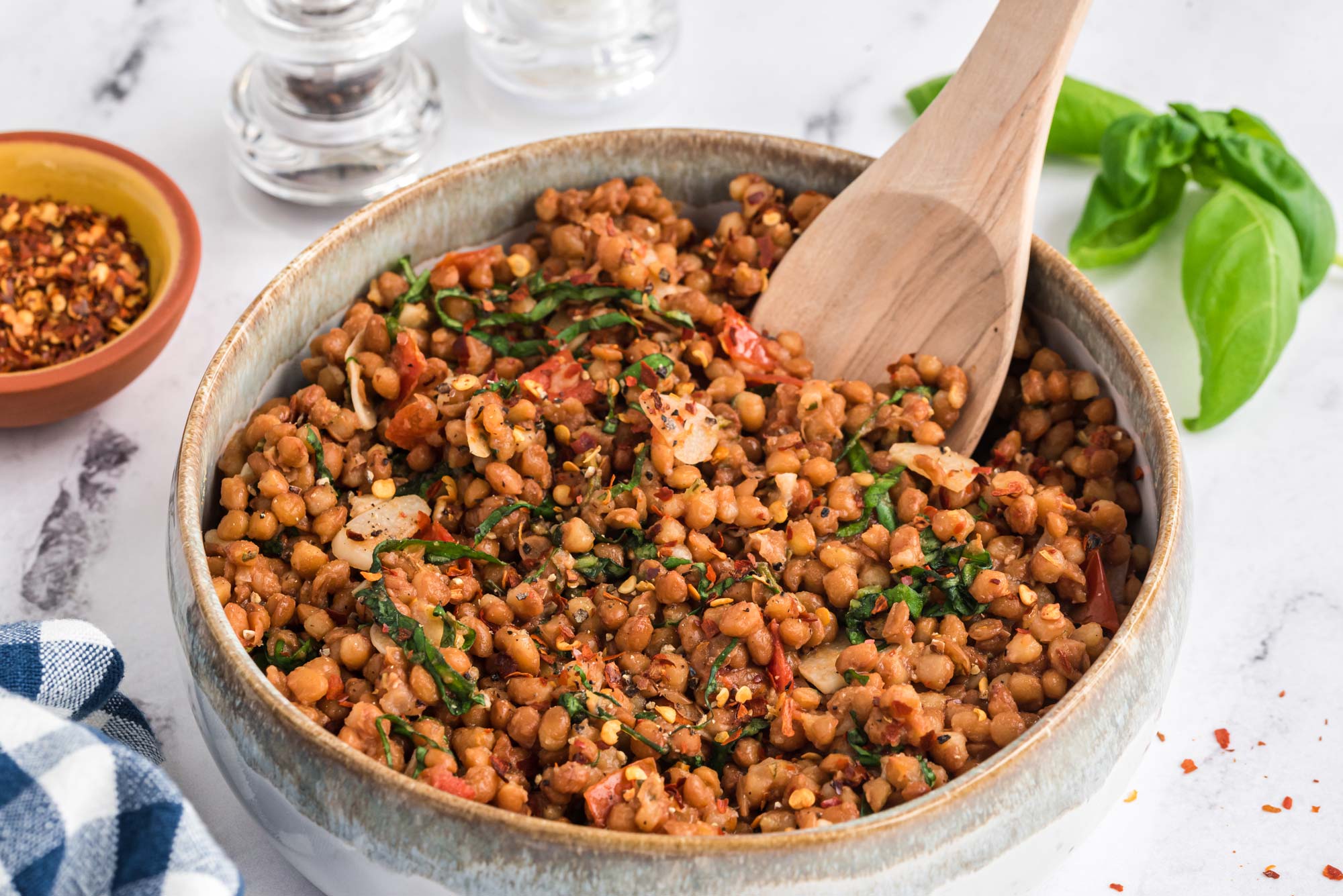
Warm Garlic and Herb Lentils is a quick protein-rich appetizer or side dish for those days when you are craving something that hits all the right flavor notes. These delectable pulses are bursting with freshness and textures that make a delicious side to a plant-based meal, a tasty addition to green salads, a fun topping on whole grain bread, or a satisfying snack all by themselves. How can something so simple be so satisfying? We know — plants are magical!
5. Mushroom Lentil Chorizo
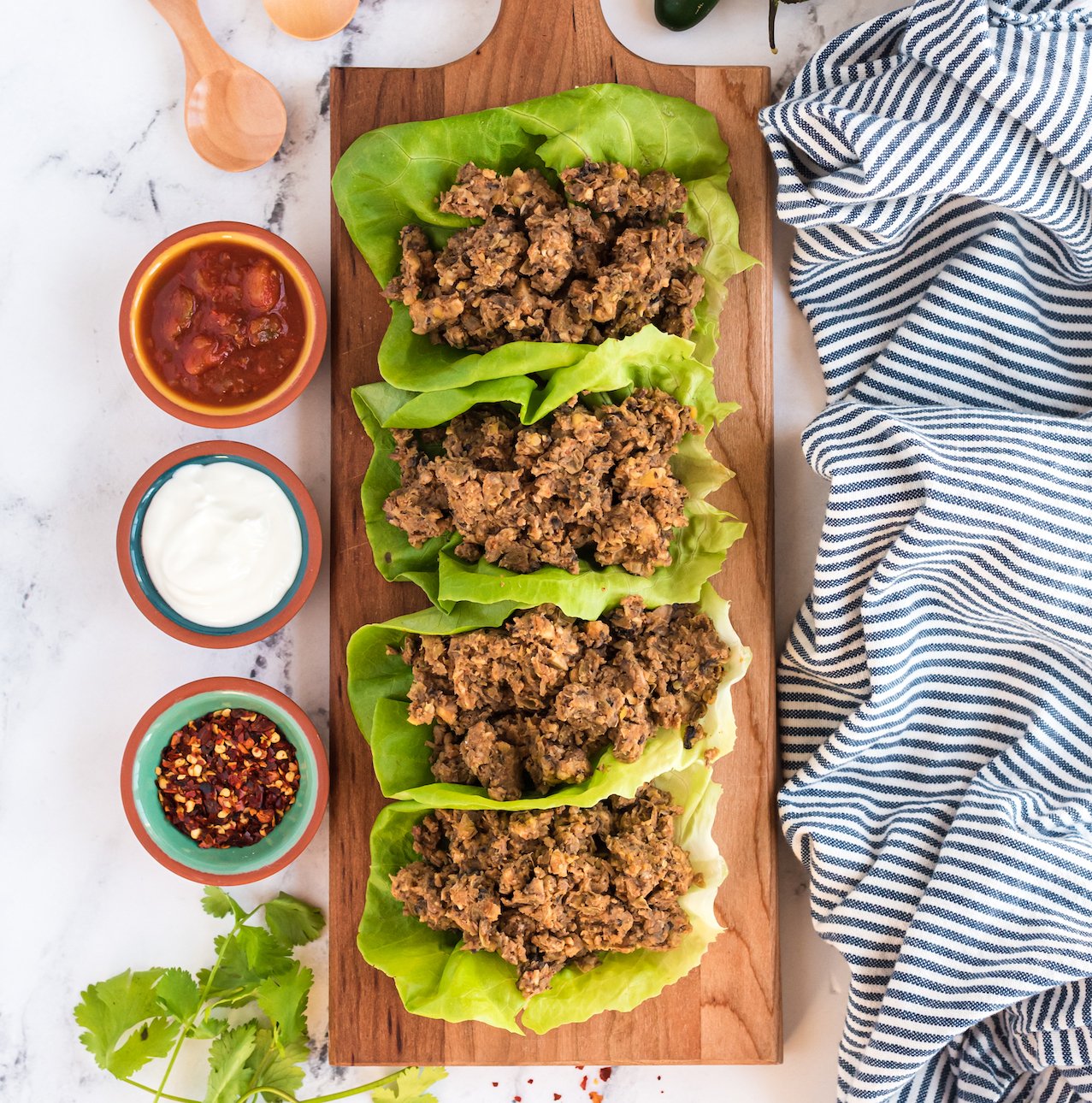
Mushroom Lentil Chorizo is most certainly a game changer in the hearty plant-based protein department. Lentils on their own have an earthy and savory flavor that is elevated when herbs, spices, and other aromatics are thrown into the mix. What’s more, this tasty recipe will give you an opportunity to experiment with spices and experience flavors similar to traditional chorizo. Add this chorizo to tacos, mix it into your favorite pasta sauce, or sprinkle it on top of plant-based pizza.
6. Hearty and Healing Lentil Burgers
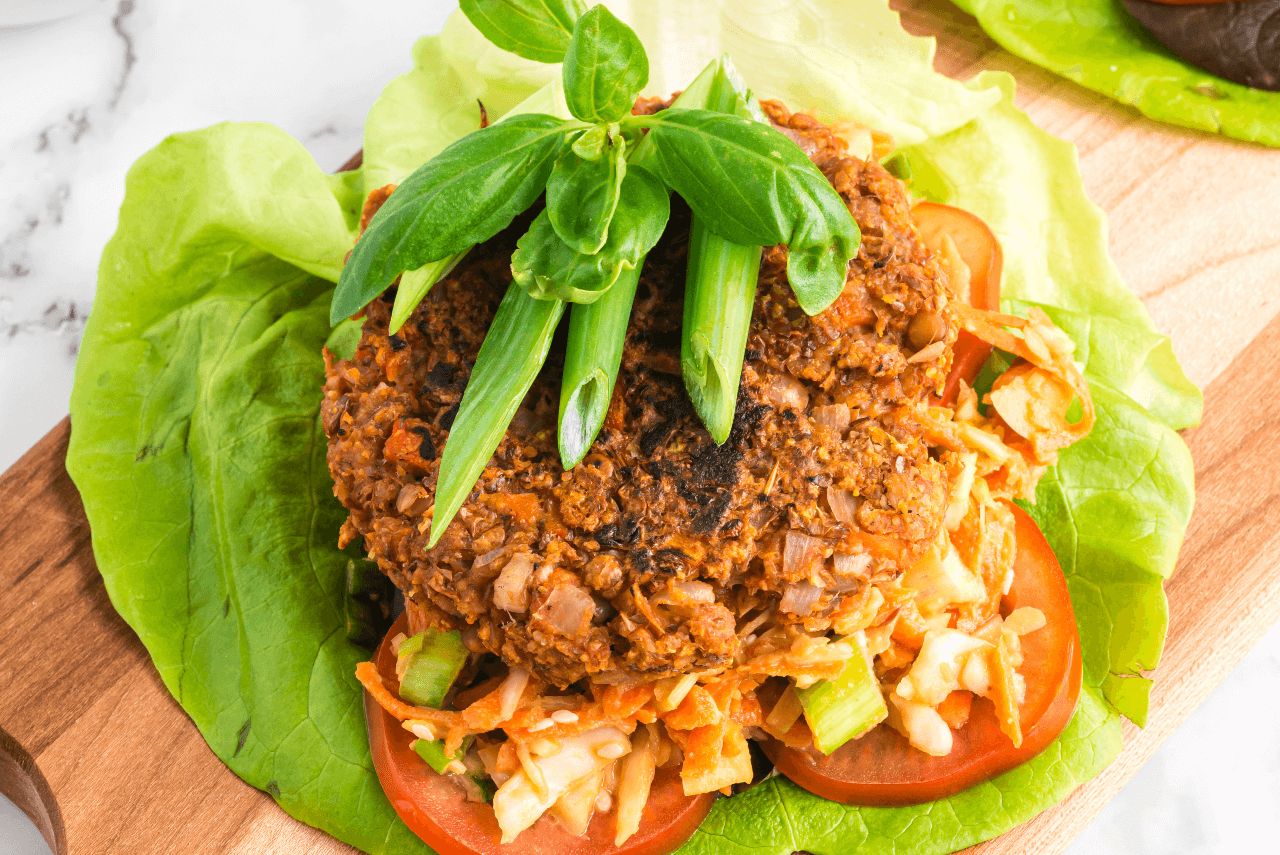
For a bit of Americana, get ready to devour these Hearty and Healing Lentil Burgers. Lentils take center stage as a culinary and nutritional champion, providing great texture, flavor, and, of course, loads of health-promoting benefits. Thanks to these superstar pulses, there are plenty of B vitamins, iron, magnesium, potassium, zinc, plant protein, and beneficial fiber in every delectable bite. This is a perfect meal to pile high with even more nutritious veggie toppings to make it truly nutrient-packed.
7. Lentil Sloppy Joes
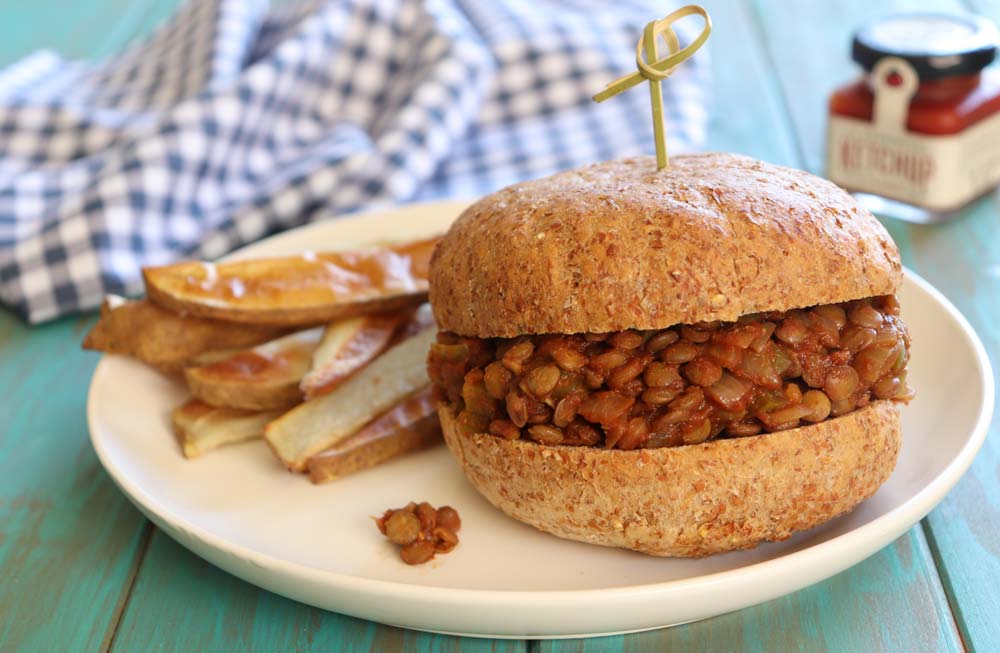
Lentil Sloppy Joes are a delicious plant-based swap for a classic childhood favorite. Our version is just as tasty and way more nutritious. You can’t go wrong with the irresistible combination of sweet, savory, smoky, and satisfying. Plus, it’s a fun and messy (in the best way) opportunity to incorporate the mighty lentil. This hearty “sammy” is filled with wholesome plant-based fiber, protein, and oodles of vitamins and minerals (and that’s just from the lentils). Whip these up to share with your loved ones, and get ready to create some new and wonderful (plant-based) memories!
We Love Lentils!
Lentils are a superfood that ticks all five boxes — nutrient-dense, delicious, affordable, sustainable, and versatile. You can use different types of lentils in different ways, from stand-alone dishes to thickening agents for soups and stews to bases for healthy baked goods. No matter which lentil type you use or how you cook them, they’ll bring both flavor and nutrition to your recipes. We hope you enjoy these healthy, plant-based lentil recipes!







